When I recently visited Osaka, I thought I’d do a bit of sightseeing while I was there.
When I think of Osaka (in my mind), Tsutenkaku Tower, Shinsekai, Namba Grand Kagetsu theater, and the Glico neon sign come to mind, but I had no idea where they were located.
After some research, I found that while somewhat scattered, everything was within walking distance, so I decided to take a walking tour around the area.
For anyone like me who thinks “I want to check out those places, but I have no idea where they are,” I’d like to share this photo report!
The Route I Walked
In search of iconic “Osaka spots,” here’s the route I took:
It’s quite a bit of walking, so take it as a rough guide.
Note: I walked this route and took these photos in 2013, so the scenery may have changed somewhat by now. Please keep that in mind.
Dobutsuen-mae → Shinsekai → Tsutenkaku
Exiting Dobutsuen-mae Station and turning down a side street, a colorful avenue came into view.
This is Shinsekai.
I wanted to try some fried skewers, but time was short, so I passed through!
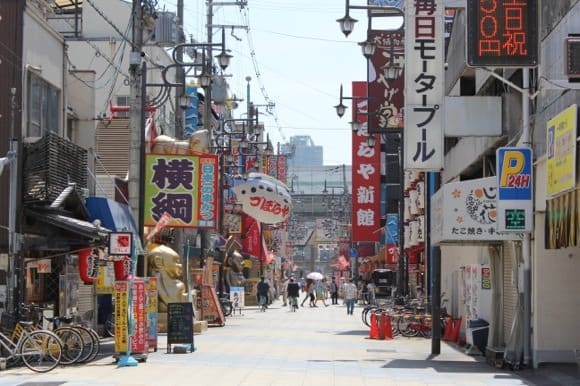
Walking with Tsutenkaku in sight.
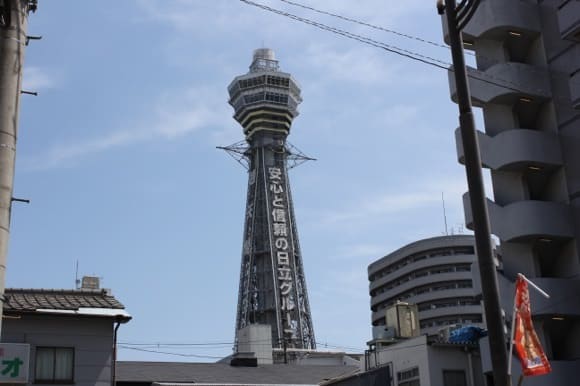
This is Billiken.
Originally a statue created by someone in America, it’s apparently been placed here in Osaka as a god of good fortune.
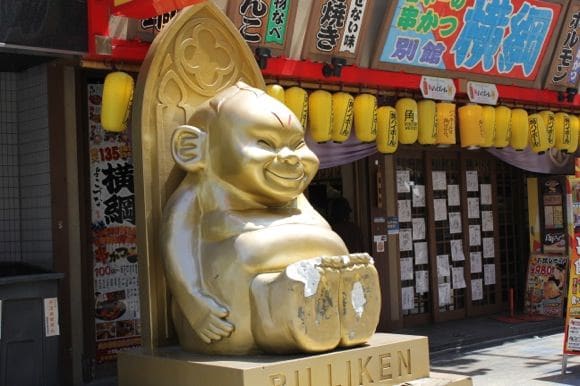
The flamboyant atmosphere really does strike visitors from other prefectures as “quintessentially Osaka!”
I’d like to come back here at night next time.

Turning a corner, Tsutenkaku came directly into view!
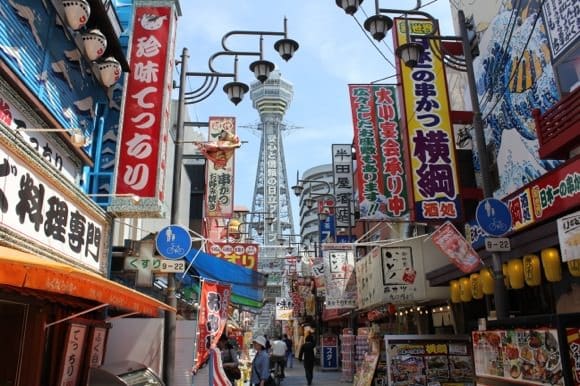
Passing underneath and continuing on.
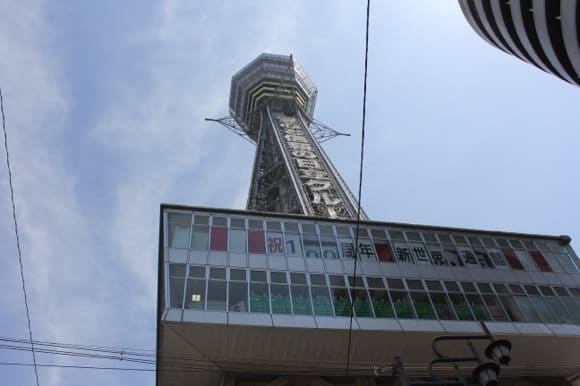
Leaving Tsutenkaku Hondon Street and emerging onto a main road.
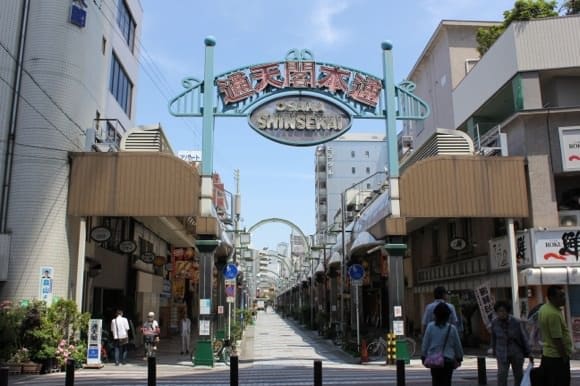
“Double-dipping sauce is forbidden!”
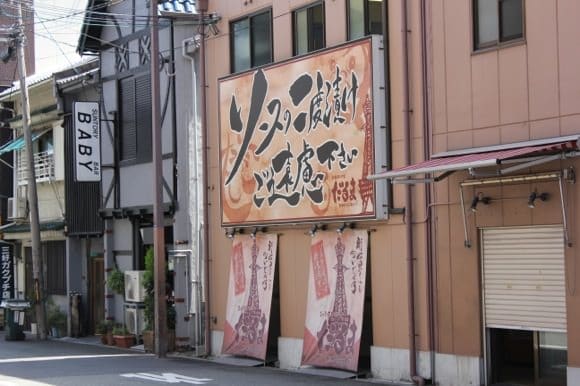
Nihonbashi → Namba, Grand Kagetsu Theater
Emerging onto a large avenue heading toward Namba.
Wait, why are there so many electronics shops? I realized I’d reached Nihonbashi, Kansai’s largest electronics district.
Being a weekday morning, there weren’t many people around.
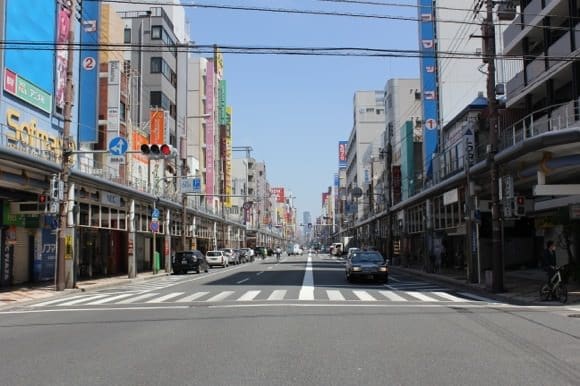
Many specialty electronics components are sold here, of course along with large retailers like Sofmap.
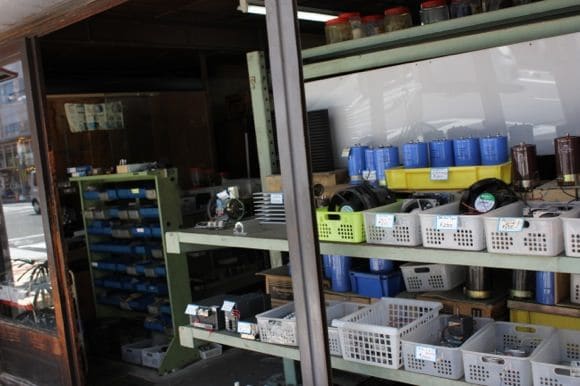
Game and anime shops dot the area.
Personally, my impression is that Akihabara is a young person’s district with a heavy anime focus, while Nihonbashi still retains much of its historic character as an electronics district.
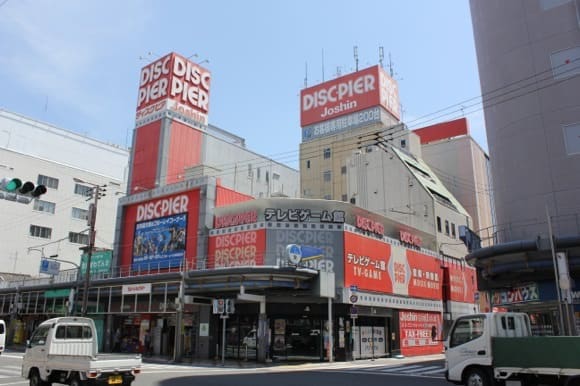
After leaving Nihonbashi, I had lunch at Chitose, a nikusuui restaurant.
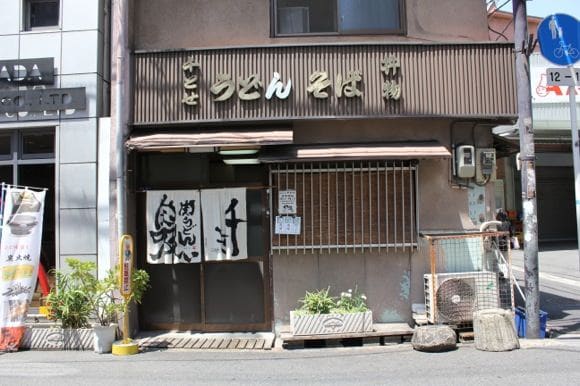
Nikusuui, which reportedly started as “beef udon without the noodles.”
The sweet-savory broth and tender beef made for a taste I really enjoyed. (Being a big beef udon fan already!)

For a detailed review of that meal, see the article below.
Continuing on, I passed in front of Namba Grand Kagetsu Theater on Sennichimae.
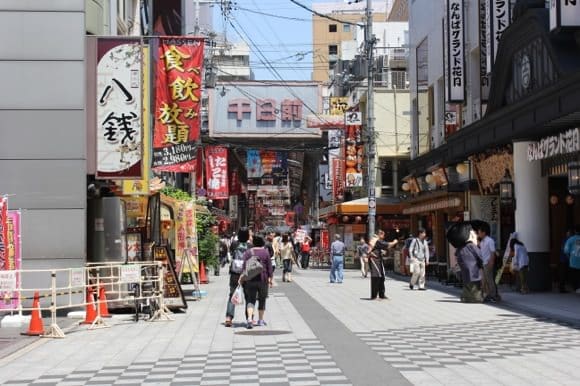
The aggressive hawking and upbeat energy really do feel like the headquarters of Yoshimoto entertainment. Character mascots of comedians like Akashiya Sanma greet visitors.
I’d like to go inside next time!
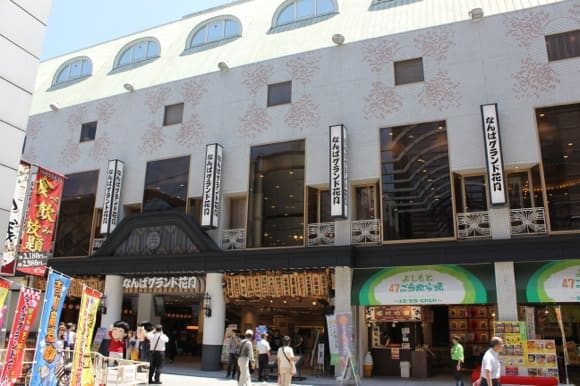
Continuing through Namba toward Dotonbori.
There are the famous signs everyone thinks of when they think Osaka—the Kani Doraku crab and the Glico neon!
Namba → Dotonbori, Kani Doraku and Glico Neon
Takashimaya in front of Namba Station.

I’ve finally arrived in Dotonbori!
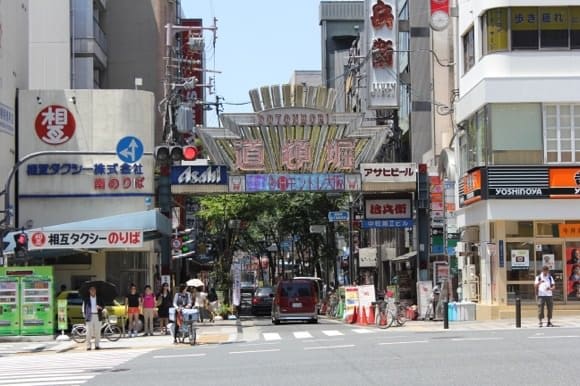
The historic Osaka Shochiku Theater.

So this is the famous moving crab sign from Kani Doraku that you see on TV!
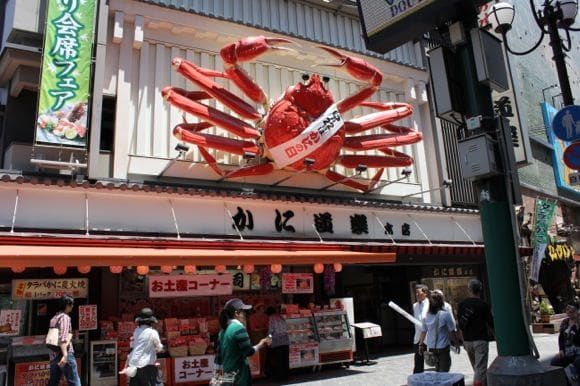
Here too, brightly colored signs compete for attention everywhere. It’s all about standing out.
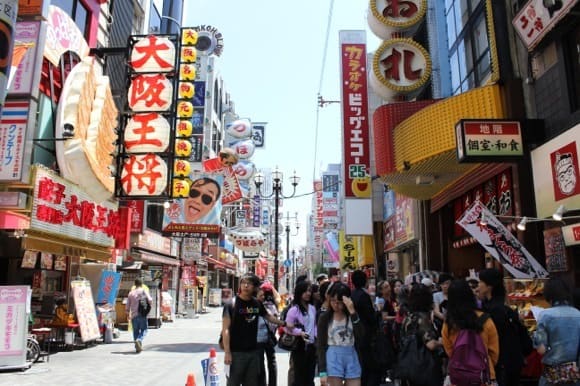
Osaka specialty Kuidaore.

Large objects hanging from signs has become basically the default here.

A dangling cow.
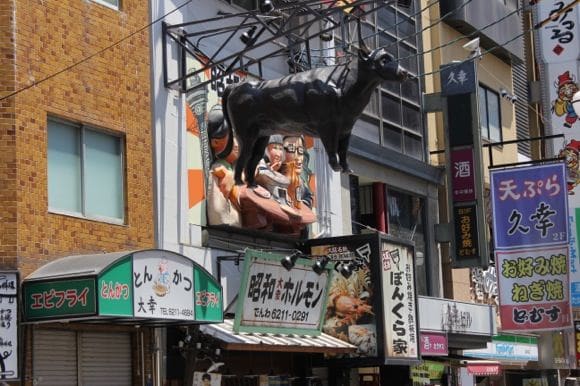
Every sign aggressively declares “Look at me!” This is Osaka!
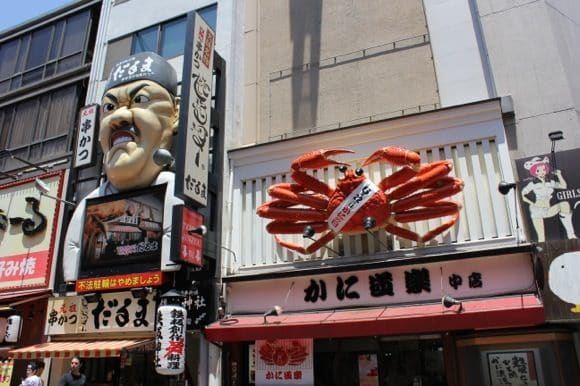
Don Quijote has an unusually shaped Ferris wheel attached.
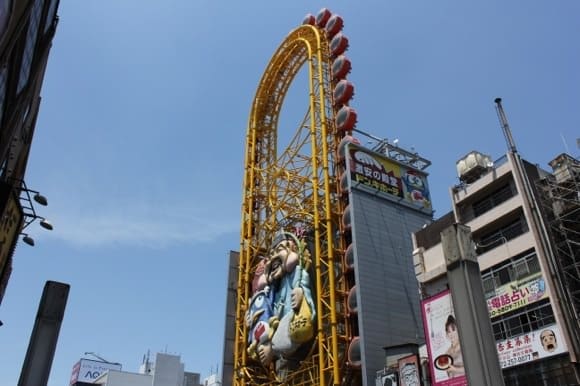
Stepping back a bit, Ebisu Bridge was the finishing point for today’s walk.
This is the spot that appears in almost every “We asked Osaka residents!” type TV segment.
Almost everyone has seen the Glico neon somewhere at some point.
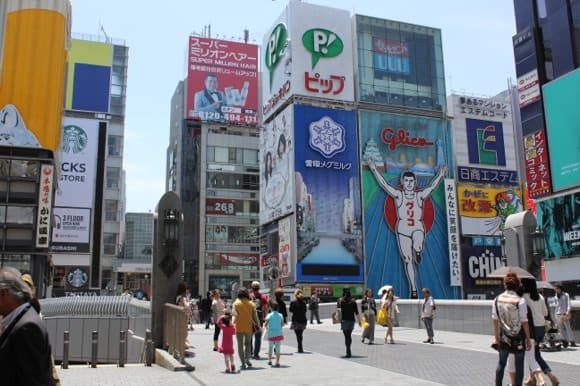
Final Thoughts
Walking through what I consider the quintessential Osaka spots made for quite an enjoyable stroll. If you don’t mind the distance, it’s a recommended route for experiencing Osaka!


Comments